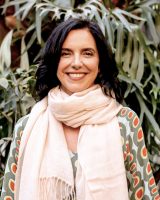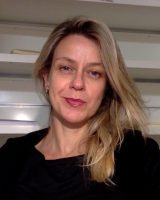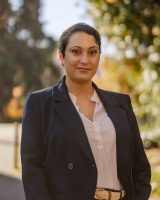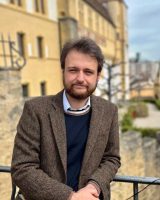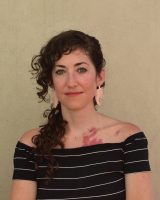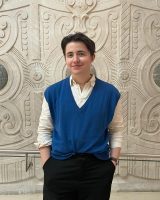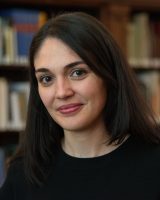CAA News Today
CAA Signs on to ACLS + Council of Graduate Schools + The Phi Beta Kappa Society Joint Statement on Cuts to the NEH
posted by CAA — April 04, 2025
CAA has signed on to the American Council of Learned Societies (ACLS), Council of Graduate Schools (CGS), and The Phi Beta Kappa Society joint statement on cuts to the National Endowment for the Humanities (NEH). In conjunction with these societies, we encourage the current administration to reconsider dramatic reduction of staff and ask Congress to protect the NEH.
“Critical thought, cultural memory, and wisdom fostered by the humanities remain crucial to a vibrant democracy. The NEH has upheld these values since its founding. For less than the cost of a postage stamp to every American, the NEH’s thoughtful grantmaking helps community and scholarly life thrive.”
Read the full statement here.
OTHER LEARNED SOCIETIES AND INSTITUTIONS WHO HAVE SIGNED ON TO THE JOINT STATEMENT
American Academy of Religion
American Association for Italian Studies
American Folklore Society
American Historical Association
American Musicological Society
American Philosophical Association
American Political Science Association
American Society for Theatre Research
American Society of Overseas Research
American Sociological Association
American Studies Association
Association for Asian Studies
Association for Slavic, East European, and Eurasian Studies
Association for the Study of African American Life and History
Association of Research Libraries
Association of University Presses
Linguistic Society of America
North American Conference on British Studies
Oral History Association
Organization of American Historians
Renaissance Society of America
Society of Biblical Literature
CAA Publications Need You—Apply to Serve on a Journal!
posted by CAA — April 03, 2025
Be a part of the beating heart of CAA! All four of CAA’s Field-Leading Publications are seeking candidates to fill several Board seats and editorial positions!
- Art Journal Open is seeking an Editor-in-Chief to serve a three-year term
- Art Journal is seeking a Reviews Editor to serve a three-year term
- The Art Bulletin is seeking two (2) Editorial Board Members to serve four-year terms
- caa.reviews is seeking a new Editor-in-Chief to serve a three-year term and Field Editors in four areas to serve three-year terms.
Descriptions of the roles, expectations, and detailed application instructions are provided in the links above.
Deadline: April 18
CAA Signs on to National Humanities Alliance Statement on Threats to the NEH
posted by CAA — April 03, 2025
CAA has signed on to the National Humanities Alliance (NHA) statement on threats to the National Endowment for the Humanities (NEH), released in response to the Department of Government Efficiency (DOGE) targeting the NEH. DOGE aims to reduce staff, cut grant programs, and rescind grants that have already been awarded. CAA stands with NHA in supporting the NEH mission and appealing to members of Congress to intervene and ensure the NEH fulfills its Congressional mandate. Along with NHA and several other societies, CAA fervently believes the NEH “…has a positive impact on every congressional district,” and “…cutting NEH funding directly harms communities in every state and contributes to the destruction of our shared cultural heritage.”
Read the full statement here. We strongly urge the CAA community to act by contacting Congress in support of the NEH. You can do so in a matter of moments via this easy form!
OTHER LEARNED SOCIETIES AND INSTITUTIONS WHO HAVE SIGNED ON TO THE NHA STATEMENT
American Academy of Religion
American Antiquarian Society
American Association for Italian Studies
American Association for State and Local History
American Historical Association
American Musicological Society (AMS)
American Oriental Society
American Philosophical Association
American Society for Eighteenth-Century Studies
American Sociological Association
Association for Asian Studies
Association of Research Libraries
Association for Slavic, East European, and Eurasian Studies
Association of University Presses
Coalition of State Museum Associations (COSMA)
German Studies Association
Linguistic Society of America
Modern Language Association
National Council on Public History
National Council of Teachers of English (NCTE)
North American Conference on British Studies
Organization of American Historians
The Phi Beta Kappa Society
Renaissance Society of America
Society of American Archivists
Society of Biblical Literature
University of Connecticut Humanities Institute (UCHI)
CAA Signs on to the American Historical Association Statement Defending the Smithsonian
posted by CAA — April 03, 2025
CAA has signed on to the American Historical Association (AHA) statement defending the Smithsonian Institution after the release of a recent executive order and accompanying fact sheet claiming Smithsonian museums are displaying “…improper, divisive, or anti-American ideology.” This is a gross mischaracterization of the role and impact of the Smithsonian.
“Patriotic history celebrates our nation’s many great achievements. It also helps us grapple with the less grand and more painful parts of our history. Both are part of a shared past that is fundamentally American. We learn from the past to inform how we can best shape our future. By providing a history with the integrity necessary to enable all Americans to be all they can possibly be, the Smithsonian is fulfilling its duty to all of us.”
Read the full statement in defense of the institution here.
OTHER LEARNED SOCIETIES AND INSTITUTIONS WHO HAVE SIGNED ON TO THE AHA STATEMENT
American Association for Colleges of Teacher Education
American Association of Geographers
American Society for Environmental History
Association for Slavic, East European, and Eurasian Studies
Association for the Study of African American Life and History
Association of Research Libraries
Civil Rights Movement Archive
Conference on Asian History
Education4All
Kurt Vonnegut Museum and Library
Labor and Working Class History Association
LGBTQ+ History Association
Midwestern History Association
National Association of Diversity Officers in Higher Education
National Council on Public History
Network of Concerned Historians
North American Victorian Studies Association
Oral History Association
PEN America
Society for Historians of the Gilded Age and Progressive Era
Society for the History of Children and Youth
Society for US Intellectual History
Southern Association for Women Historians
Woodhull Freedom Foundation
Congratulations to CAA113 Travel Grantees!
posted by CAA — March 27, 2025
Each year, CAA awards travel and support grants for scholars to attend the Annual Conference, funded by foundations and individual donors. We were thrilled to have so many grantees join us in NYC this past February for the CAA 113th Annual Conference!
CAA Edwards Memorial Support Grantees
The CAA Edwards Memorial Support Grants, in memory of Archibald Cason Edwards Sr. and Sarah Stanley Gordon Edwards and made possible by Mary D. Edwards, supports emerging scholars and have received their PhD within the past two years or who are nearing the end of a doctoral program.
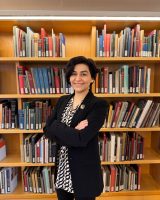 |
Alev Berberoğlu, Bibliotheca Hertziana – Max Planck Institute for Art History Presentation: “Ottoman Quest for Women in Photography: The Case of Elisa Zonaro (1863–1945)” Session: Women and the Global Historiography of Photography, 1840-1940 |
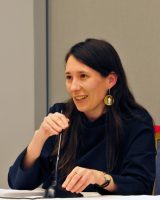 |
Adrienn Kácsor, Bauhaus-Universität Weimar Presentation: “Fugitive Avant-garde” Session: Explosive Objects: Material Histories of Violence in Europe, 1920s–1940s |
Samuel H. Kress Foundation CAA Annual Conference Travel Fellows
Recognizing the value of the exchange of ideas and experience among art historians, the Kress Foundation offers travel grants for scholars presenting on European art before 1830.
Terra Foundation Travel Grants for Underrepresented Scholars of American Art
The Terra Foundation for American Art offered a limited number of conference travel grants for scholars of American art who have historically been underrepresented at CAA conferences to attend the CAA 113th Annual Conference. This travel support encouraged participation by those whose work contributes meaningfully to expanding and transforming understanding of American art narratives, practices, and presentations.
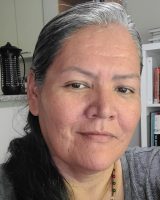 |
Jennifer Bowen, PhD Student, University of Victoria |
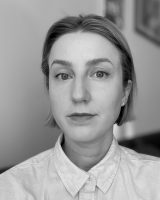 |
Rachel Burke, PhD Student, Harvard University |
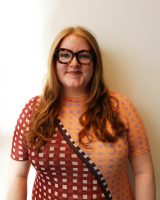 |
Brianne Chapelle, MA student, Hunter College, City University of New York |
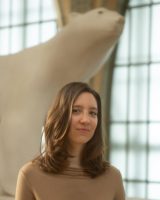 |
Ivana Dizdar, PhD candidate, University of Toronto |
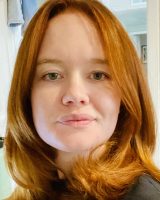 |
Hannah Forsythe, PhD Candidate, The University of Texas at Austin |
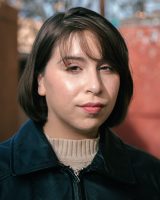 |
Madison Garay, MA Student, University of New Mexico |
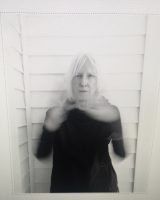 |
Nancy Hart, Independent Scholar |
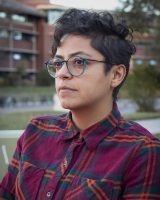 |
Elnaz Javani, Professor, Colorado State University |
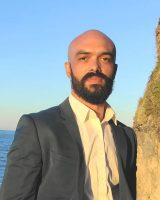 |
Benjamin L. Jones, Provost’s Fellow and Assistant Professor in the History of Art, The Ohio State University |
 |
Sarah E. Kleinman, PhD Student, Virginia Commonwealth University |
 |
Jacquelyn Delin McDonald, Lecturer University of Texas at Dallas |
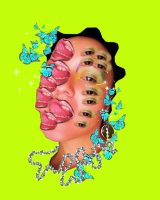 |
Darleen Martinez, Independent Artist |
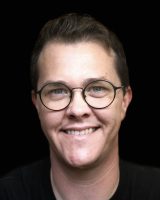 |
Cyle Metzger, Assistant Professor, Bradley University |
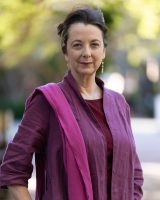 |
Nancy Marie Mithlo, Associate Professor, University of California Los Angeles |
 |
Shane Morrissy, PhD Candidate, Duke University |
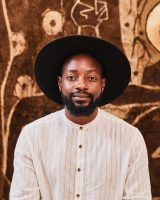 |
Aaron Samuel Mulenga, PhD candidate, University of California, Santa Cruz |
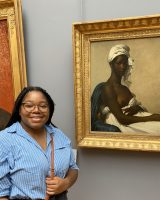 |
Brandee M. Newkirk, PhD candidate, Duke University |
 |
Hyeongjin Oh, Professor, University of Minnesota-Twin Cities |
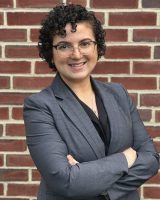 |
Emma Oslé, PhD Candidate, Rutgers University |
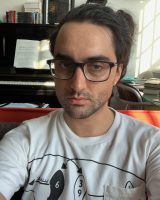 |
Louis Shankar, PhD Student, University College London |
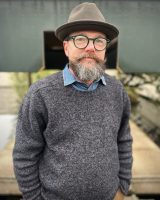 |
Scott Singeisen, Associate Professor, North Carolina Central University |
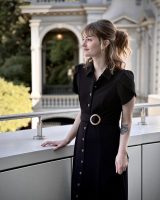 |
Sienna Weldon, Curatorial Assistant, California State Parks, and Lecturer, Sacramento, California |
 |
Luke Williams, Assistant Professor, The University of Texas at Austin |
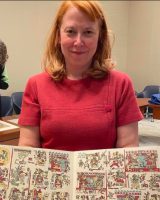 |
Seonaid Valiant, Associate Curator for Latin American Studies, Arizona State University |
 |
Jacob Zhicheng Zhang, PhD Student, University of Toronto |
CAA Signs on to The Phi Beta Kappa Society + ACLS Joint Statement on Executive Order to Dismantle Department of Education
posted by CAA — March 24, 2025
CAA has signed on to the Phi Beta Kappa Society and The American Council of Learned Societies (ACLS) joint statement addressing the Executive Order to close the US Department of Education. We join these societies in urging the administration to rescind this order, given the “…catastrophic implications for students, faculty, communities, and the nation.”
Read the full statement here. We strongly urge those in the CAA community to also make use of The Phi Beta Kappa Society toolkit, which contains resources to guide how members can take action.
OTHER LEARNED SOCIETIES WHO HAVE SIGNED ON TO THE PHI BETA KAPPA SOCIETY + ACLS JOINT STATEMENT
American Association for Italian Studies
American Association of Geographers
American Folklore Society
American Historical Association
American Philosophical Association
American Political Science Association
American Society for Environmental History
American Society for Theatre Research
American Society of Overseas Research
American Sociological Association
Association for Asian Studies
Association for Slavic, East European, and Eurasian Studies
Association for the Study of African American Life and History
German Studies Association
Linguistic Society of America
Modern Language Association
National Council on Public History
North American Conference on British Studies
North American Victorian Studies Association
Organization of American Historians
Renaissance Society of America
Rhetoric Society of America
Society for Cinema and Media Studies
Society of Biblical Literature
Call for Nominations: Council of Field Editors (caa.reviews)
posted by CAA — March 21, 2025
caa.reviews invites nominations for individuals to join the Council of Field Editors for a three-year term July 1, 2025–June 30, 2028 (with an option to renew once). An online, open-access journal, caa.reviews is devoted to the peer review of new books, museum exhibitions, and projects relevant to art history, visual studies, and the arts. Candidates may be artists, art historians, art critics, art educators, curators, or other art professionals with stature in the field and experience writing or editing books and/or exhibition reviews; institutional affiliation is not required.
CAA is searching for Field Editors in the following fields:
- Design History
- Eighteenth-Century Art
- Theory and Historiography
- Japanese Art
In collaboration with the caa.reviews Editor-in-Chief, the caa.reviews Editorial Board, and CAA’s staff editor, each Field Editor curates content for review, commissions reviewers, and evaluates manuscripts for publication. Field Editors specializing in books are expected to stay informed about newly released and significant books and related media within their areas of expertise, while those focused on exhibitions should remain updated on current and upcoming exhibitions (along with other related projects) in their respective geographic regions.
The Council of Field Editors meets once a year in February onsite at the CAA Annual Conference. Members of all CAA committees and editorial boards volunteer their services without compensation or financial support for travel to and accommodations at the Annual Conference.
Candidates must be current CAA members in good standing and should not be serving on the editorial board of a competing journal or another CAA editorial board or committee. Nominations and self-nominations are welcome. Nominators should ascertain their nominee’s willingness to serve before submitting a letter of nomination. Interested applicants—both self-nominated or nominated by someone else—should submit a CV and a cover letter as a single PDF document to Eugenia Bell, CAA Editorial Director.
Deadline: April 18
Call for Nominations: Editor-in-Chief (caa.reviews)
posted by CAA — March 21, 2025
caa.reviews invites nominations for the position of Editor-in-Chief for the term July 1, 2026–June 30, 2029. The three-year term is to be preceded by a one-year term as Editor-in-Chief Designate, July 1, 2025–June 20, 2026, and succeeded by a one-year term as past Editor-in-Chief, July 1, 2029–June 30, 2030.
CAA encourages applications from candidates with a strong record of scholarship who are committed to the imaginative development of caa.reviews. An online, open-access journal, caa.reviews is devoted to the peer review of recent books, museum exhibitions, and projects relevant to the fields of art history, visual studies, and the arts.
The Editor-in-Chief oversees the smooth operations of caa.reviews by ensuring the journal regularly publishes topical, scholarly, critical reviews in the arts; maintains the integrity of the journal by carefully monitoring and implementing the organization’s conflict of interest and ethical policies; and provides extra support to the Editorial Board, Council of Field Editors, and CAA editorial staff wherever necessary to ensure the journal’s operations remain in line with the organization’s overall mission of fostering worldwide access to intellectual and creative material promoting the highest standards of discourse in the disciplines of art and art history.
The Editor-in-Chief attends virtual caa.reviews Editorial Board meetings and Publications Committee meetings via Microsoft Teams in the spring and fall plus three meetings onsite at the CAA Annual Conference in February each year, including the annual Council of Field Editors meeting. The Editor-in-Chief does not receive financial support for travel to and accommodations at the Annual Conference but does receive a yearly stipend.
Candidates must be current CAA members in good standing and should not serve concurrently on the editorial board of a competitive journal or on another CAA editorial board or committee. The Editor-in-Chief may not publish their own work on caa.reviews during the term of service. Nominators should ascertain their nominee’s willingness to serve before submitting a name; self-nominations are also welcome. Interested applicants—both self-nominated or nominated by someone else—should submit a CV and a cover letter as a single PDF document to Eugenia Bell, CAA Editorial Director, with the subject line “caa.reviews Editor-in-Chief.”
Deadline: April 18
Call for Nominations: Editor-in-Chief (Art Journal Open)
posted by CAA — March 21, 2025
The Art Journal/Art Journal Open Editorial Board invites nominations for the position of Editor-in-Chief of AJO for the term of July 1, 2026–June 30, 2029 (with service as incoming editor designate, July 1, 2025–June 30, 2026). Candidates may be artists, art historians, critics, curators, educators, or other professionals within the membership served by CAA; institutional affiliation is not required.
AJO is an online forum for the visual arts that presents artists’ projects, conversations and interviews, scholarly essays, and other content from across the cultural field. The independently edited journal publishes original material by artists, scholars, teachers, archivists, curators, critics, and other cultural producers and commentators, with a commitment to foster new intellectual exchanges about contemporary art and culture. AJO is committed to broad representation and the inclusion of a wide range of approaches, methods, and subfields of modern and contemporary art history and art practice. Published on a continual, rolling basis, AJO is an open access journal that reaches a wide, global audience.
The Editor-in-Chief is responsible for commissioning all content for AJO. The editor solicits or commissions projects, texts, and time-based content by artists and other authors, and determines the appropriate scope and format of each project. Working in consultation with the Art Journal Editor-in-Chief, reviews editor, and Editorial Board, the editor determines which pieces should undergo peer review and subsequent revision before acceptance. The editor also works with authors and the CAA staff editor on the development and preparation of materials for publication. The Editorial Board expects that a significant portion of the journal will be geared toward work or concerns of artists, and that the Editor-in-Chief will endeavor to give voice to underrepresented perspectives. Qualifications for the position include a broad knowledge of current art, the ability to work closely with artists in a wide variety of practices, and experience in developing written and other content for arts platforms. The position includes membership on the Editorial Board and, after the orientation period, an annual honorarium.
The Editor-in-Chief attends virtual Art Journal/AJO Editorial Board meetings and Publications Committee meetings via Microsoft Teams in the spring and fall plus two meetings onsite at the CAA Annual Conference in February each year, and submits an annual report to the CAA VP for Publications.
Candidates must be current CAA members in good standing and should not serve concurrently on the editorial board of a competitive journal or on another CAA editorial board or committee. The Editor-in-Chief may not publish their own work on AJO or in Art Journal during the term of service. Nominators should ascertain their nominee’s willingness to serve before submitting a name; self-nominations are also welcome. Interested applicants—both self-nominated or nominated by someone else—should submit a CV and a cover letter as a single PDF document to Eugenia Bell, CAA Editorial Director.
Deadline: April 18
Call for Nominations: Reviews Editor (Art Journal/Art Journal Open)
posted by CAA — March 21, 2025
The Art Journal/AJO Editorial Board invites nominations for the position of Reviews Editor for a three-year term, July 1, 2025–June 30, 2028. The candidate may be an artist, art historian, art critic, art educator, curator, or other art professional; institutional affiliation is not required. Art Journal published quarterly by CAA, is devoted to twentieth- and twenty-first-century art and visual culture.
Working with the journal’s Editorial Board, the reviews editor is responsible for commissioning all book and exhibition reviews in Art Journal (approximately three per issue). The Reviews Editor selects books and exhibitions for review, commissions reviewers, and determines the appropriate length and character of reviews. The Reviews Editor also works with authors and CAA’s staff editors in the development and preparation of review manuscripts for publication. The person in this position is expected to keep abreast of newly published and important books and recent exhibitions in twentieth-century and contemporary art, criticism, theory, and visual culture. The three-year term includes membership on the Art Journal Editorial Board and an annual honorarium, paid quarterly.
The Reviews Editor attends virtual Art Journal/Art Journal Open Editorial Board meetings via Microsoft Teams in the spring and fall plus one onsite at the CAA Annual Conference in February each year, and submits an annual report to the CAA VP for Publications.
Candidates must be current CAA members in good standing and should not be serving on the editorial board of a competitive journal or on another CAA editorial board or committee. Members may not publish their own work in the journal during the term of service. Nominators should ascertain their nominee’s willingness to serve before submitting a name; self-nominations are also welcome. Interested applicants—both self-nominated or nominated by someone else—should submit a CV and a cover letter as a single PDF document to Eugenia Bell, CAA Editorial Director.
Deadline: April 18



